7 Best Furniture and Layout Ideas for Small Living Rooms
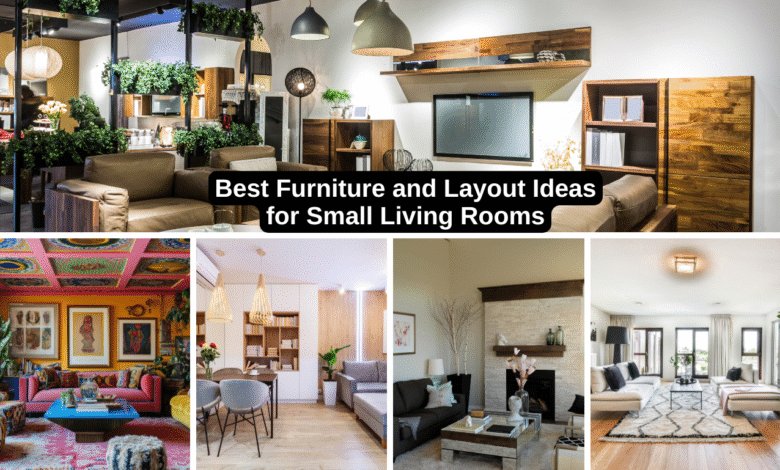
Best Furniture and Layout Ideas for Small Living Rooms
Designing small living rooms can be both exciting and challenging. The limited space requires creative thinking to make the room functional, stylish, and comfortable without feeling cramped. The key lies in choosing the right furniture and layout that enhances the available area, adds personality, and supports your lifestyle.
Whether you live in a compact apartment, a studio, or simply want to revamp your cozy sitting area, this guide covers the best Furniture and Layout Ideas for Small Living Rooms — helping you make the most of every square inch.
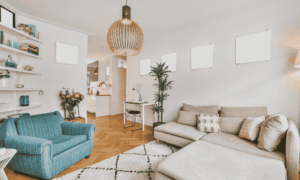
1. Choose Multi-Functional Furniture
One of the smartest decisions you can make in Small Living Rooms is investing in multi-functional furniture. These versatile pieces help reduce clutter while providing dual purposes:
- Sofa beds or futons offer a place to sit by day and a bed for guests at night.
- Ottomans with hidden storage serve as both footrests and mini storage units.
- Lift-top coffee tables can double as workspaces or dining surfaces.
The key is to find pieces that not only fit your room physically but also enhance its practicality. This way, your furniture works harder without overwhelming the space.
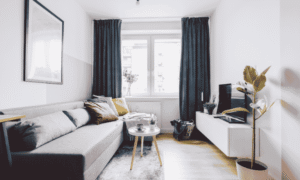
2. Use Light Colors and Mirrors
While not furniture per se, your layout and color choices drastically affect how large or small a room feels. Light colors reflect more light, making small living rooms feel airy and open. Try soft whites, pale greys, or pastel tones for your walls, upholstery, and rugs.
Mirrors are also incredibly effective in small spaces. A large mirror placed opposite a window can double the perception of space and brightness. Mirrored furniture or decor accents can also subtly reflect light and add elegance.
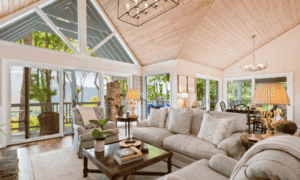
3. Opt for Scaled-Down Furniture
In small living rooms, size matters. Oversized sectionals and bulky entertainment centers can quickly crowd the space. Instead, look for:
- Apartment-sized sofas or loveseats
- Nesting tables that can tuck away when not in use
- Slim-profile chairs like armless accent chairs or slipper chairs
- Wall-mounted TV units or shelves to free up floor space
These scaled-down options are designed to serve the same function as larger items, but in a more compact form. Keep furniture raised on legs rather than flush to the ground—it creates a sense of openness and visibility underneath.
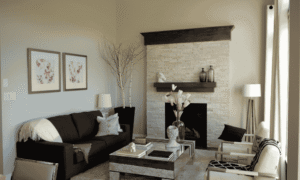
4. Create Zones with Smart Layouts
Even in small living rooms, layout is everything. Strategic arrangement can make the room flow better and feel more spacious:
- Floating furniture: Don’t push all pieces against the walls. Floating a sofa in the center with a rug underneath can define a clear living area.
- Corner seating: A small sectional or L-shaped sofa in the corner maximizes seating without obstructing pathways.
- Vertical storage: Install tall bookcases or floating shelves to draw the eye upward and keep clutter off the floor.
- Defined zones: Use area rugs or lighting (like a pendant over a reading chair) to divide functions, even in small spaces subtly.
Think of your layout like a puzzle. Every piece should have a clear purpose, and everything should flow together smoothly
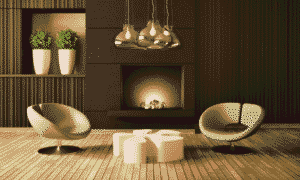
5. Use Transparent and Open-Frame Furniture
Furniture that doesn’t block visual space helps small areas feel larger. Think glass, acrylic, or open-frame metal furniture. For example:
- Glass coffee tables create the illusion of more floor space.
- Acrylic ghost chairs offer seating without visual heaviness.
- Open-frame bookshelves or side tables add storage and function without making the room feel boxed in.
This is especially effective in small living rooms where too many solid, bulky pieces can overwhelm the space quickly.
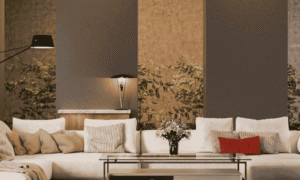
6. Embrace Built-In and Wall-Mounted Solutions
Built-ins are ideal for maximizing awkward corners and underused wall space. In small rooms, every inch counts. Consider:
- Built-in shelving around door frames or windows
- Wall-mounted desks or consoles for a work-from-home nook
- Custom media walls with integrated lighting and storage
- Fold-down tables or murphy-style desks for multi-use needs
These options keep your floor clear and can be tailored to your room’s layout, especially useful when standard furniture just doesn’t fit right.
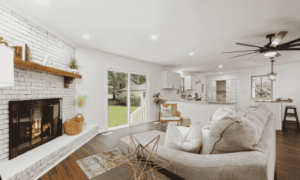
7. Add Personal Touches Without Clutter
Decorating small living rooms doesn’t mean sacrificing personality. The key is to choose decor pieces that are intentional and scale-appropriate:
- Use a few large art pieces instead of many small ones to avoid a cluttered look
- Choose decorative storage (like baskets or stylish boxes) that hides everyday items
- Incorporate textiles—like cozy throws, patterned cushions, or textured rugs—for warmth and visual interest
- Install wall sconces instead of table lamps to save surface space
By selecting decor that’s both meaningful and minimal, you’ll keep your space stylish and serene.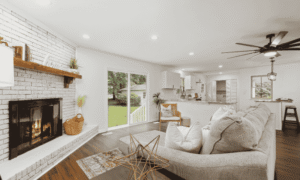
Conclusion
Designing small living rooms doesn’t mean you have to compromise on comfort, functionality, or style. With the right furniture choices and a smart layout, even the most compact spaces can feel open, inviting, and beautifully put together. From multifunctional pieces to clever use of vertical space, every design decision plays a role in maximizing what you have.
Remember, the key to success in small living rooms lies in keeping things intentional—choosing furniture that serves multiple purposes, selecting light and airy colors, and arranging your space to support easy movement and daily living. Whether you’re working with a tight studio apartment or a cozy family home, there’s always a way to make your living area feel bigger and better.
In the end, small living rooms offer a unique opportunity to get creative and thoughtful with your space. When styled with care, they can be just as stunning and functional as larger rooms, proving that great design has nothing to do with square footage, and everything to do with smart, stylish choices.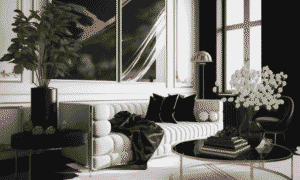
FAQs About Furniture and Layout Ideas
1. What are some space-saving furniture ideas for small living rooms?
In small living rooms, furniture must work double duty. Look for pieces like ottomans with hidden storage, wall-mounted shelves, foldable tables, and apartment-sized sofas. These items help maximize floor space while still offering comfort and utility. The best furniture for small living rooms combines style with function, allowing the room to feel open rather than overcrowded.
2. How can I make my small living room look bigger?
To make small living rooms appear larger, focus on light colors, mirrors, and vertical space. Use pale or neutral shades on walls and furniture, hang a large mirror to reflect light, and install shelves that draw the eye upward. Keep clutter to a minimum and choose furniture with exposed legs to create a sense of openness. These visual tricks are highly effective in small living rooms.
3. What type of sofa works best in small living rooms?
The ideal sofa for small living rooms is one that’s slim, functional, and well-proportioned. Loveseats, armless couches, and modular sectionals with storage options are great choices. Consider a sofa bed if you need additional sleeping space. Avoid bulky designs, and instead opt for clean lines and compact shapes that blend seamlessly into the room.
4. Are rugs a good idea for small living rooms?
Yes, rugs can define areas and add warmth to small living rooms. Choose a rug that’s large enough to fit under the front legs of your furniture to anchor the space without overwhelming it. Light-colored rugs or those with simple patterns work best, as they maintain the room’s open feel while adding texture and coziness.
5. What lighting is best for small living rooms?
Lighting plays a major role in enhancing small living rooms. Layered lighting — such as ceiling fixtures, floor lamps, and wall sconces — helps eliminate shadows and make the space feel brighter and larger. Avoid bulky table lamps and opt for wall-mounted or hanging lights that free up surface space.
6. How can I decorate the walls in a small living room without making it feel cluttered?
In small living rooms, less is more. Instead of a crowded gallery wall, choose one or two large-scale art pieces to create a focal point. Floating shelves can also serve as both storage and display space. Mirrors, framed prints, and subtle wall decals can add character without overwhelming the room.
7. Is it okay to use bold colors in small living rooms?
Bold colors can work well in small living rooms if used strategically. Consider an accent wall or bold-colored furniture paired with neutral surroundings. Too many dark or bright shades may make the space feel smaller, but balanced pops of color can add depth and interest without compromising the room’s openness.
8. How do I arrange furniture in small living rooms to allow easy movement?
The best layout for small living rooms prioritizes flow and functionality. Avoid placing furniture directly in walkways. Floating the sofa away from walls can define zones, while corner arrangements help open up the center of the room. Use round tables or nesting tables for flexibility, and be sure to leave pathways that are at least 24–30 inches wide for movement.
9. What storage solutions work best in small living rooms?
Built-in units, floating shelves, and multi-functional furniture like storage ottomans are ideal for small living rooms. Consider wall-mounted cabinets or vertical shelving to keep the floor clear. Baskets, bins, and under-sofa drawers also help reduce clutter while keeping essential items within reach.
10. Can I still have a TV in a small living room?
Absolutely! For small living rooms, wall-mounting the TV is a smart way to save space. You can also integrate the TV into a gallery wall or place it above a console that offers additional storage. Choose sleek media furniture to maintain an uncluttered look and avoid large entertainment units that dominate the room.



